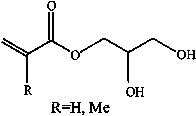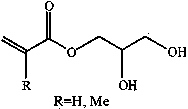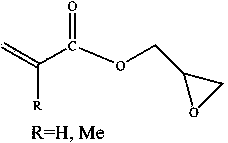Preparation method for regioselective biological-contamination resistant array chip
An anti-biological pollution, array chip technology, applied in the direction of biochemical equipment and methods, microbial measurement/inspection, biological testing, etc., can solve the problems of sample point diffusion, difficult control of array size, etc., achieve low equipment requirements, reduce non-special Effect of heterosexual adsorption and simple process
- Summary
- Abstract
- Description
- Claims
- Application Information
AI Technical Summary
Problems solved by technology
Method used
Image
Examples
Embodiment 1
[0118] Example 1: A method for preparing a regioselective anti-biological contamination array chip
[0119] Will pass through Piranha solution (H 2 SO 4 / H 2 o 2 =4 / 1, v / v) After cleaning, place the 1cm×1cm silicon chip in 2% (v / v) methanol solution of 5-hexenyltrimethoxysilane, react at 25°C for 30 minutes, wash with methanol Clean and dry. The structure of 5-hexenyltrimethoxysilane is as follows:
[0120]
[0121] 40g / L methanol solution of 3-[[2-(methacryloyloxy)ethyl](dimethyl)-ammonium]-1-propanesulfonic acid (SBMA) betaine Spin-coat on the chip surface at a spin-coating speed of 2000 rpm for 10 seconds. The structure of SBMA betaine is:
[0122]
[0123]Spread a mask with an array pattern on the surface of the chip and transfer to 20mW / cm 2 and 365nm ultraviolet light for 3 minutes to initiate graft polymerization of SBMA betaine and the surface of the chip to form non-array regions. After washing with 50% aqueous methanol solution, 40g / L of anti-biofoulin...
Embodiment 2
[0126] Example 2: A method for preparing a regioselective anti-biological contamination array chip
[0127] Place a 1cm×1cm polydimethylsiloxane sheet in a 5% (v / v) ethanol solution of 3-(methacryloyloxy)propyltrimethoxysilane, react at 25°C for 2 hours, and use Wash with 50% aqueous methanol and dry. The structure of 3-(methacryloyloxy)propyltrimethoxysilane is:
[0128]
[0129] Spin-coat the methanol / water (methanol / water=1 / 1, v / v) solution of 30g / L anti-biological contamination monomer—glyceryl methacrylate monomer on the surface of the chip, the spin-coating speed is 1500 rpm, and the time is 60 seconds. The structure of glyceryl methacrylate is:
[0130]
[0131] Spread a mask with an array pattern on the surface of the chip and transfer to 20mW / cm 2 1. Under 365nm ultraviolet light, the ultraviolet light is irradiated on the surface of the chip through the mask for 5 minutes to trigger the graft polymerization of glycerol methacrylate and the surface of the ch...
Embodiment 3
[0134] Example 3: A method for preparing a regioselective anti-biological contamination array chip
[0135] Will pass through Piranha solution (H 2 SO 4 / H 2 o 2 =4 / 1, v / v) Cleaned 1cm×1cm glass slides were placed in 2% (v / v) 3-aminopropyltriethoxysilane toluene solution, reacted at 70°C for 5 hours, and washed with toluene Wash and dry under vacuum at 120°C for 1 hour. The structure of 3-aminopropyltriethoxysilane is:
[0136]
[0137] The chips were dipped in 10% (v / v) glycidyl methacrylate in acetone solution, reacted at 25°C for 8 hours, washed with acetone and dried. The structure of glycidyl methacrylate is:
[0138]
[0139] A methanol solution of 4% (v / v) anti-biofouling monomer-hydroxyethyl methacrylate was spin-coated on the chip surface at a spin-coating speed of 2500 rpm for 10 seconds. The structure of hydroxyethyl methacrylate is:
[0140]
[0141] Spread a mask with an array pattern on the surface of the chip and transfer to 15mW / cm 2 1. Under ...
PUM
 Login to View More
Login to View More Abstract
Description
Claims
Application Information
 Login to View More
Login to View More - R&D
- Intellectual Property
- Life Sciences
- Materials
- Tech Scout
- Unparalleled Data Quality
- Higher Quality Content
- 60% Fewer Hallucinations
Browse by: Latest US Patents, China's latest patents, Technical Efficacy Thesaurus, Application Domain, Technology Topic, Popular Technical Reports.
© 2025 PatSnap. All rights reserved.Legal|Privacy policy|Modern Slavery Act Transparency Statement|Sitemap|About US| Contact US: help@patsnap.com



